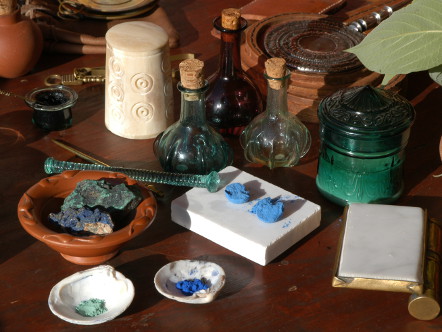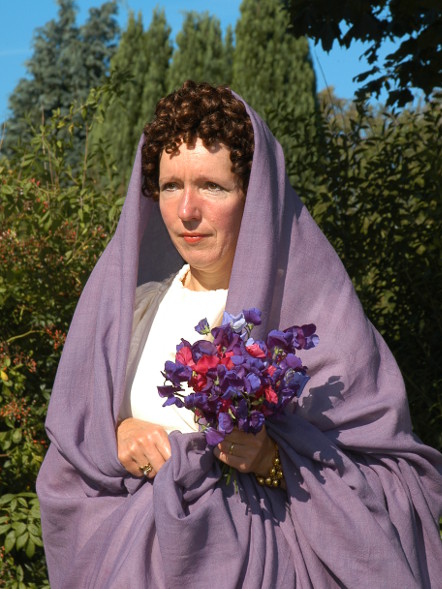Cosmetics in Acient Rome
"Cura dabit faciem" tells us the roman poet Publius Ovidius Naso, today well-known just by the name Ovid: "Only care makes a face beautiful". In his third book on the art of loving - ars amatoria - he tells us many details about beauty care of ancient roman women. Several different formulas for ointment and beauty creme are handed down for example by Ovid's poem "Means of female beauty care" (Medicamina faciei feminae). In general, beauty care was an important part of everyday life and cosmetics played in important role in the outward appearance of roman women. We cannot only see this by the poems of Ovid, but by a great amount of mirrors, empty and sometimes even filled potties for creme, glass flaks for perfume, hairpins, tweezers, combs and other things that can be seen in the exhibitions of many museums.
It can be assumed that it was even quite usual to depilate legs and alars, as we can read in the following passage from the ars amatoria: "Almost I would have warned you: don't let your alar smell like a sullen goat and don't let you legs be craggy by hirsute hairs." Normally tweezers were used to pick out hairs, but to cover greater parts resin was put on rags of linen on the skin and used to pull out the hairs.
Before cosmetics were applied to the face, it was prepared by using a powder of white lead (cerussa) or chalk. Finely ground or slotted red ochre could be used as rouge. Finely ground mountain blue or malachite were used for blue respectively green eyeshadow. A black tincture made from carbon black and oil was used to stress the contoures of the eyelid. Plates of marble or schist and skewers of glass or metal were used to grind ingredients and prepare cosmetics. A capsa could be used as beauty case and allowed to store and transport all necessary utensils outside home, too. However, cremes and oils as well as its ingredients were not very long-living. Vessels of lead or alabaster were intended to keep them in a cool place.
Pliny names about 60 different types of fragrance oils, e.g. megalium or amarakum. Very expensive perfumes with ingredientes imported from Middle and Far East existed as well as cheap imitations. The perfume market of Capua was one of the most famous markets, but a road of the perfume and creme merchants is also known for rome. Roman women loved rich, aromatic and sweet fragrance oils, whereat fashion changed from time to time as today. Ovid even tells us a formular for a creme to regenerate the skin of face: he suggests a natural mixture with barley, ervil, buckhorn, bulbs of narcissus, onions and honey. These ingredients have to be mixed to a sleek paste.


Colouring hairs was already known, too. The most populare colours were black and blond. A means to achieve deep black was made of rotten bloodsuckers, which have to be kept in a closed vessel with wine and vinegar for sixty days. Spuma batava (Batavian foam) was used to get the hairs blond and rutilandis capillis resulted in red hairs. Even a shade of blue was not impossible by special means. Women who did not want to spend their time with the process of colouring or whose hair was not useable for skillful and complex hairstyles may have used perukes. During the imperial age hairstyles were always coind by the emporer's wife. Outnumbered oictures in coins and statues give us many prominent and helpful hints on this topic. Knowing the variety and complexity of special hairstyles it is very easy to understand, that rich families had an indispensable hairdresser among their servants. Another helpful hand for a wealthy woman was her ornatrix, a slave who helped her as well with the hairstyle as with the make-up.
Accoring to Ovid's ars amatoria, having considered all things discretion was the main rule: "Sure enough a paramour doesn't want to see potties lying about on the desk. Only if art manages to stay unrevealed, it helps beauty up."
Isn't it?






